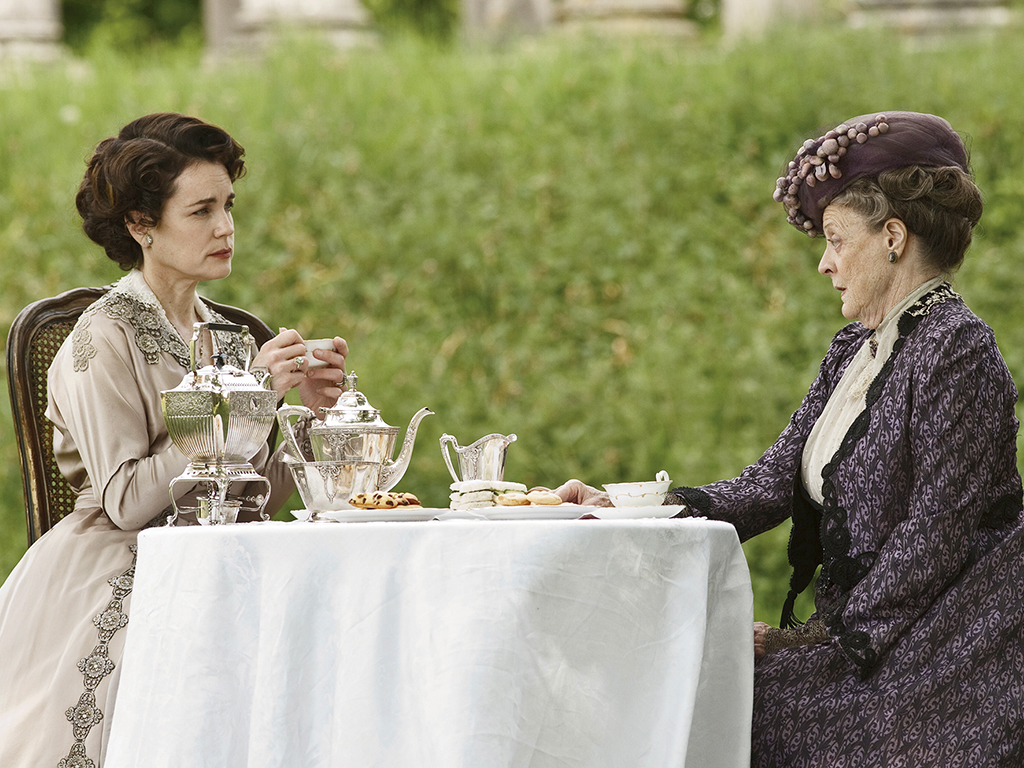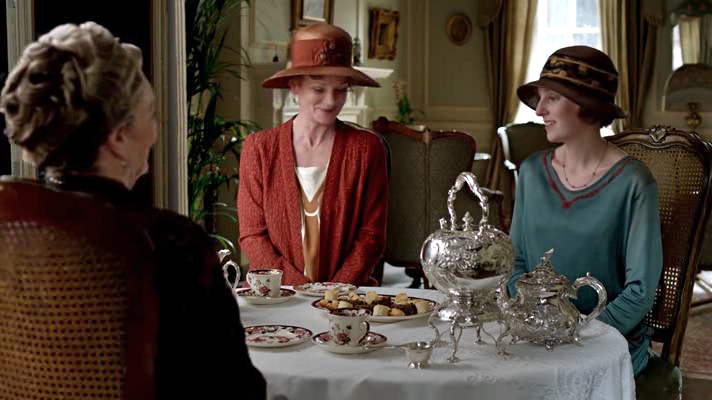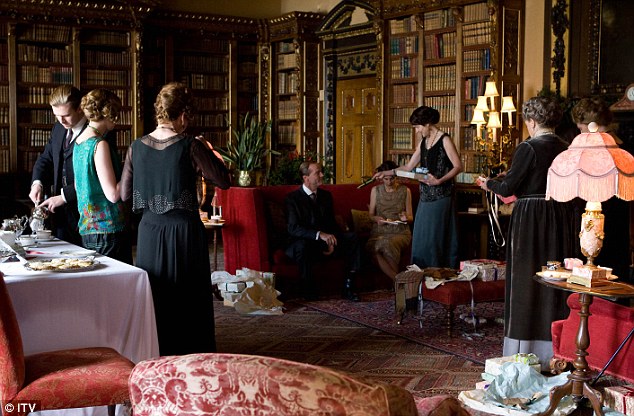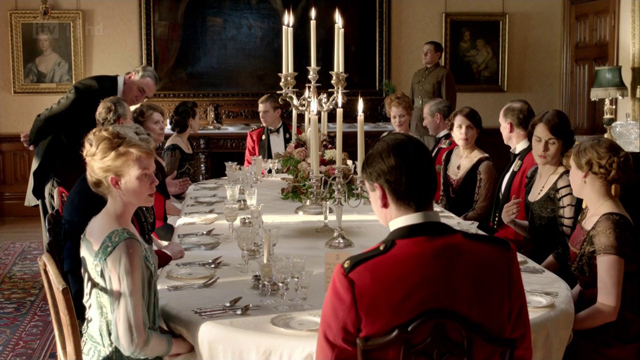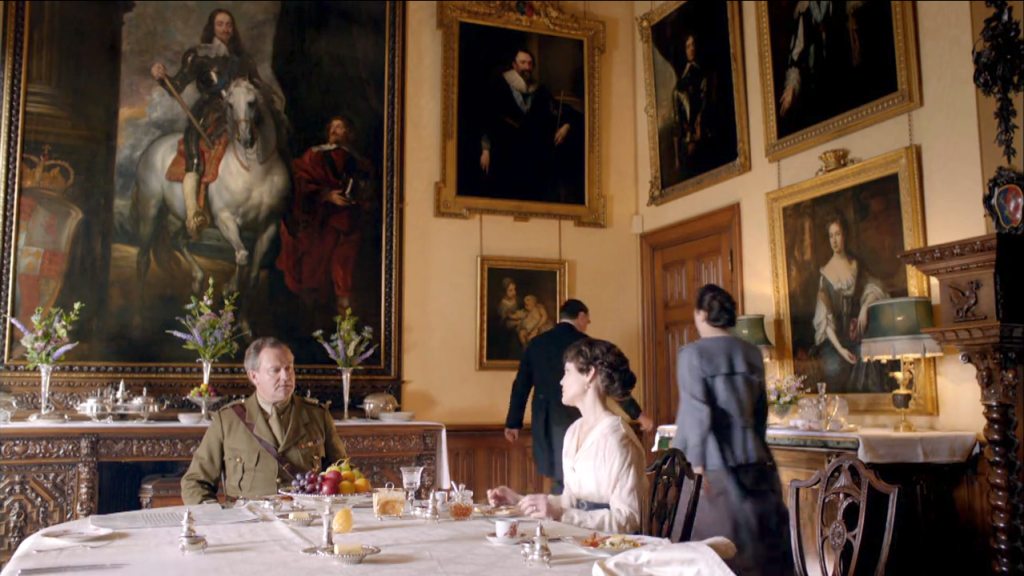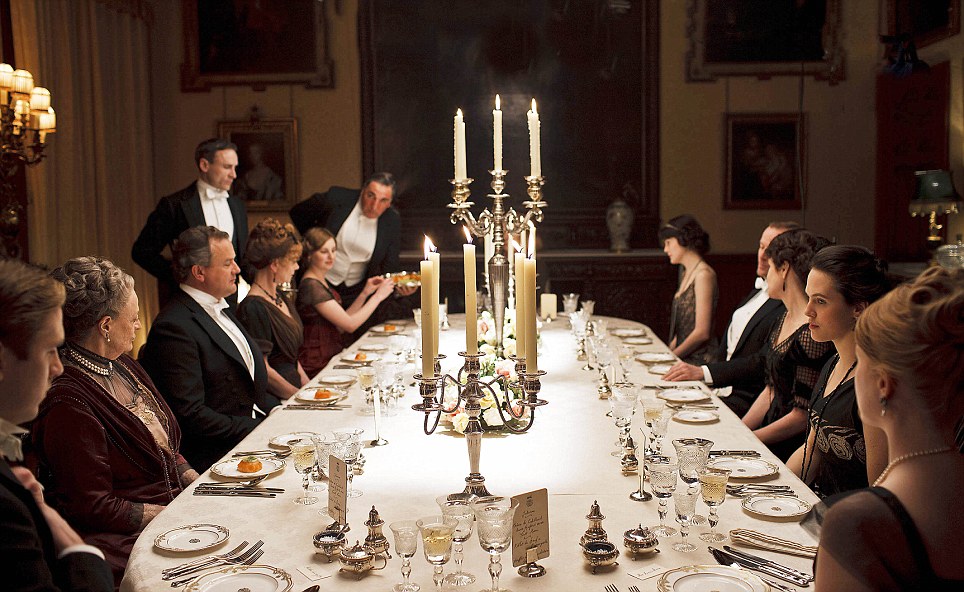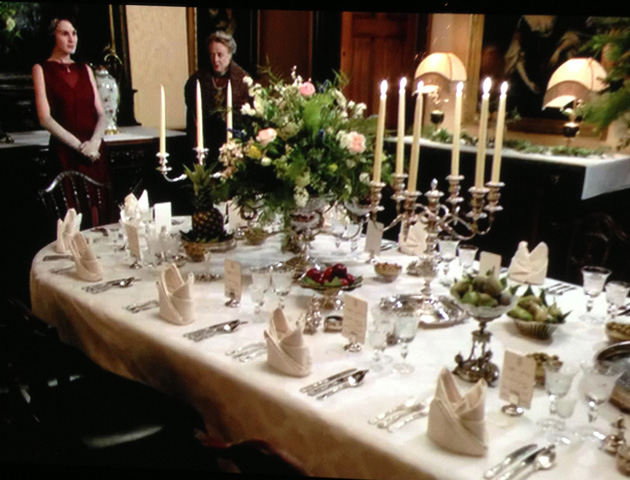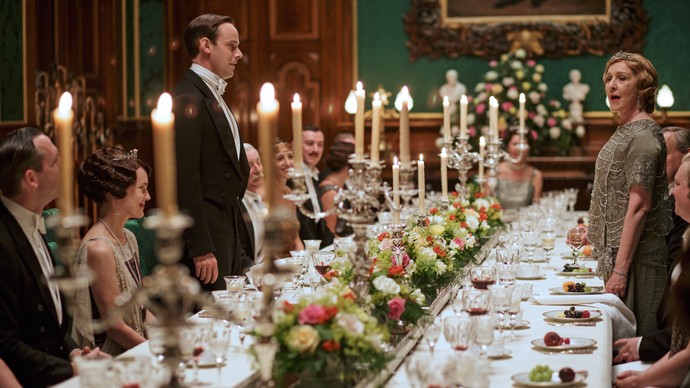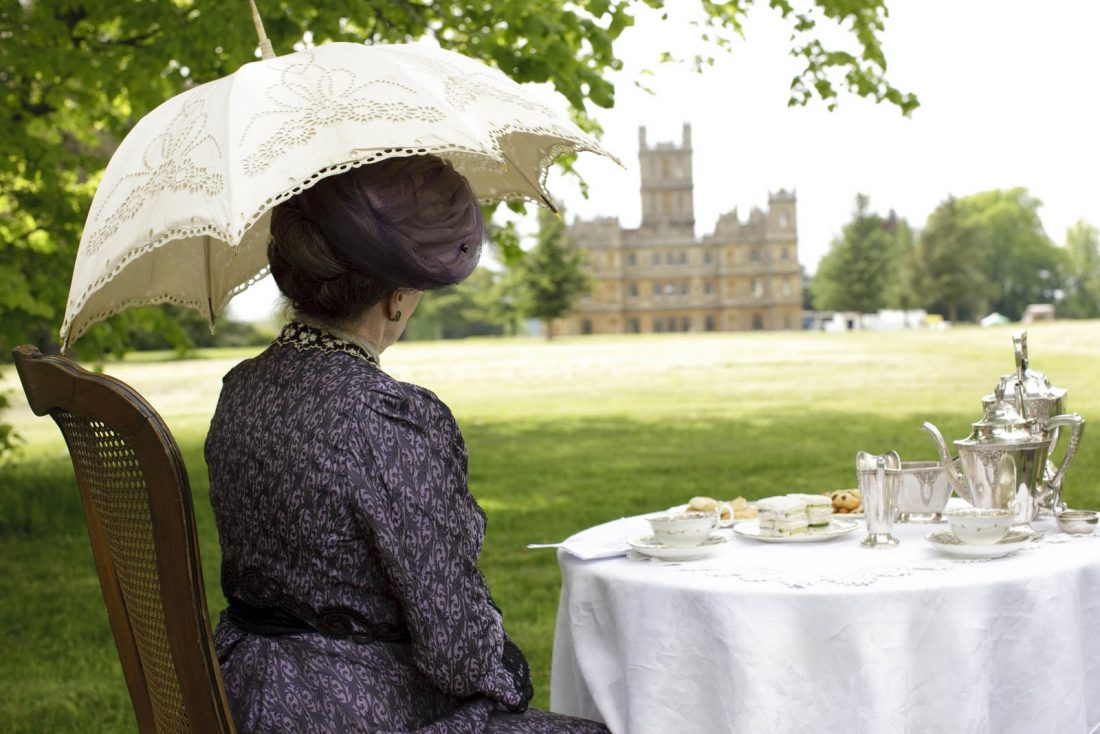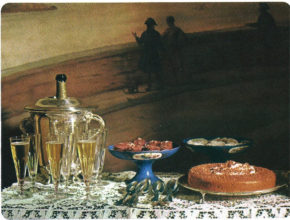These are all set during the Victorian, Edwardian, and 1910s periods. This is what most tableware lovers think of, when they’re looking for spectacular tableware and its placement.
1. Upstairs / Downstairs – Old
To be honest this series hasn’t aged as gracefully as one would hope. The china is pretty wonderful though every now an again a real anomaly pops up. The fashions are the same way, every now and again you might catch glimpse of a zipper, the hair styles would give most costubers a headache and the clothing can sometimes veer a little “Mod Victorian”. Still, there is much to be said for the art direction being very good, especially for something made some fifty years ago.
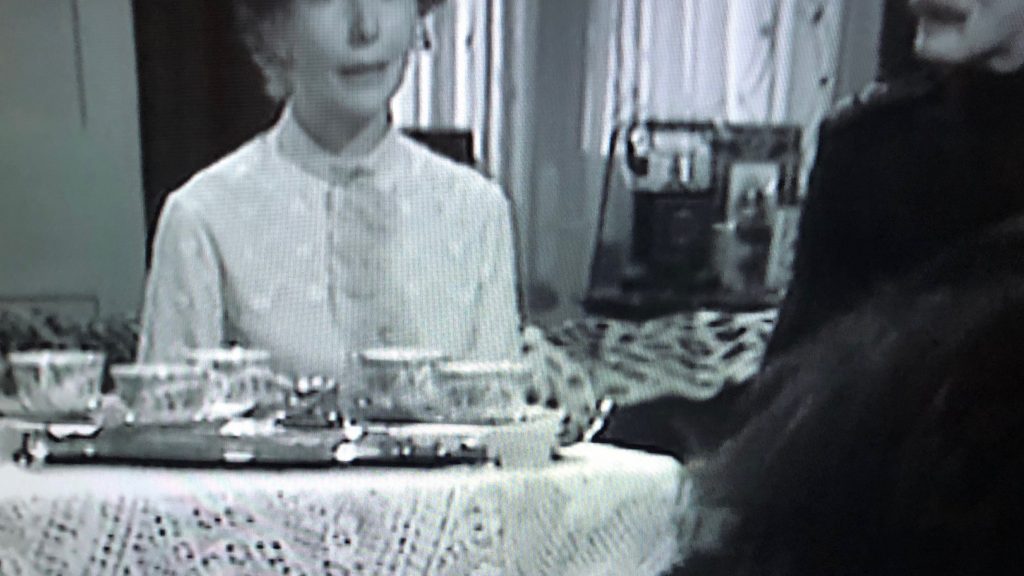
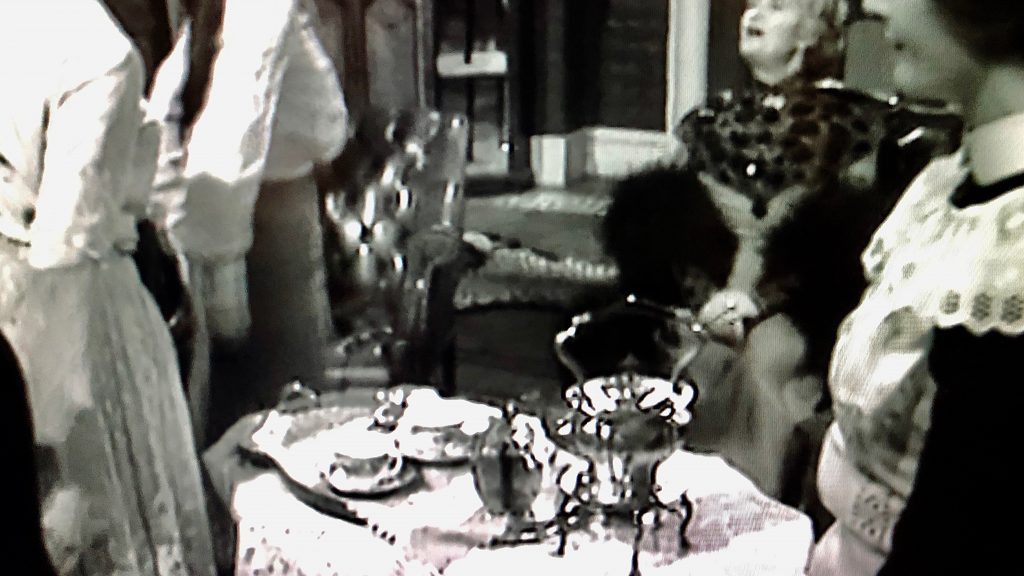

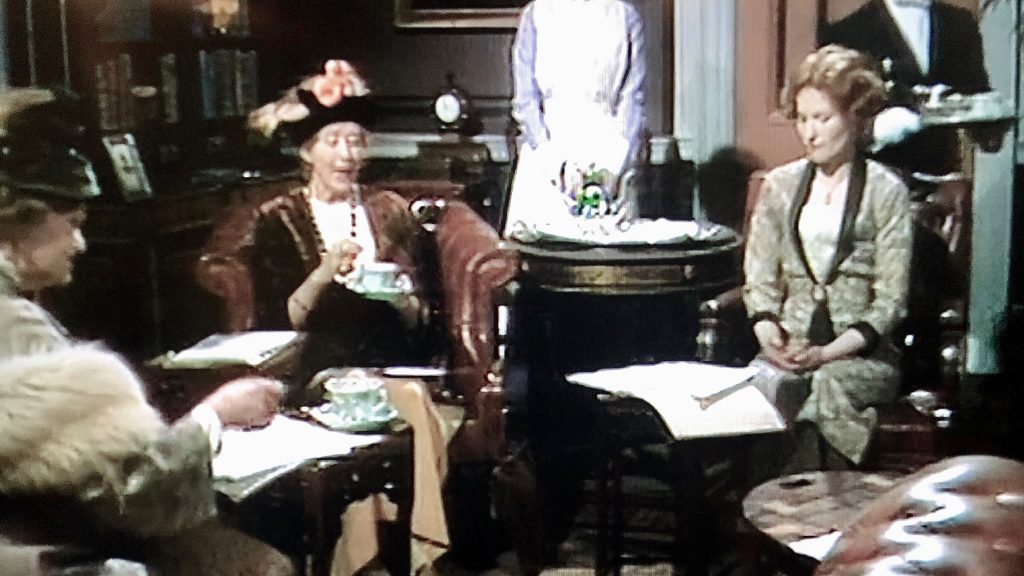
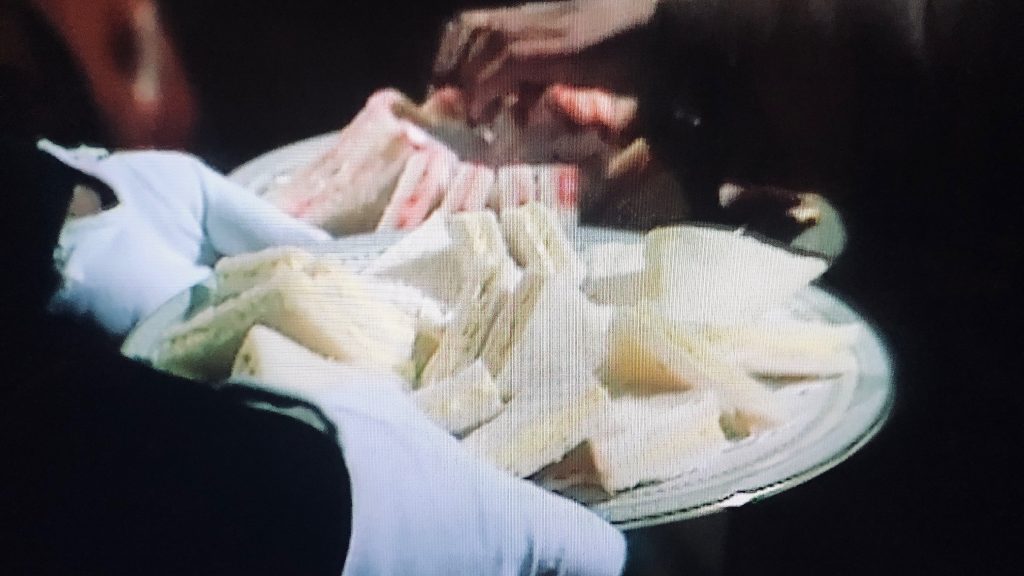
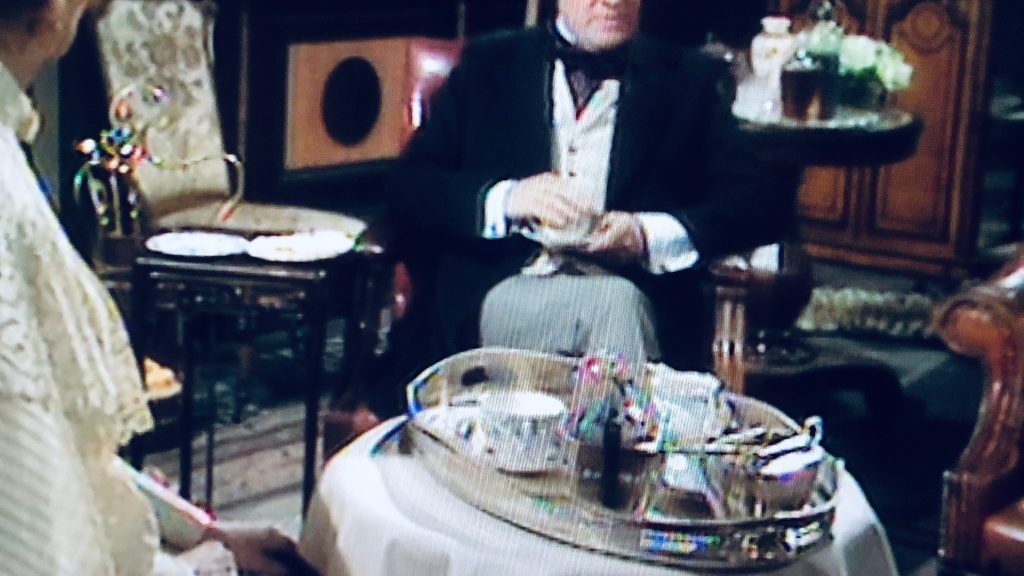
2. Sherlock Holmes (1960s/1984)
This was a British series of Sherlock Holmes mysteries starring Peter Cushing as Holmes. He’s got a gentler, jovial, and less manic take on the eponymous detective. There isn’t a ton of meals, but the silver is quite nice, especially given how old the series is. I can’t say the same for the women’s costumes. They mostly look polyester and are “the sixties does Victorian”. Where the costumes are wonderful are in the men’s smoking jackets and general accoutrements. I loved seeing Holmes and Watson in the carriage, both wearing their day gloves. So often television and films have men running about with no gloves, in the same way than women of that period were rarely gloveless out of doors, so were gentlemen. I can’t speak to the cuts of the men’s suits. Maybe someone else could let me know. Cushing’s dinner suit in the 80’s special looks fairly accurate to me.
The silver might be good, but unfortunately most of the china is not. The shape of the tea cups are distinctly not Victorian, so much so that I wonder if they were showing off current British wares for the public’s consumption. Some of the dinner ware looks more accurate, but where the show does a decent job is with the placement of the food and adherence to correct dinner and luncheon place settings.
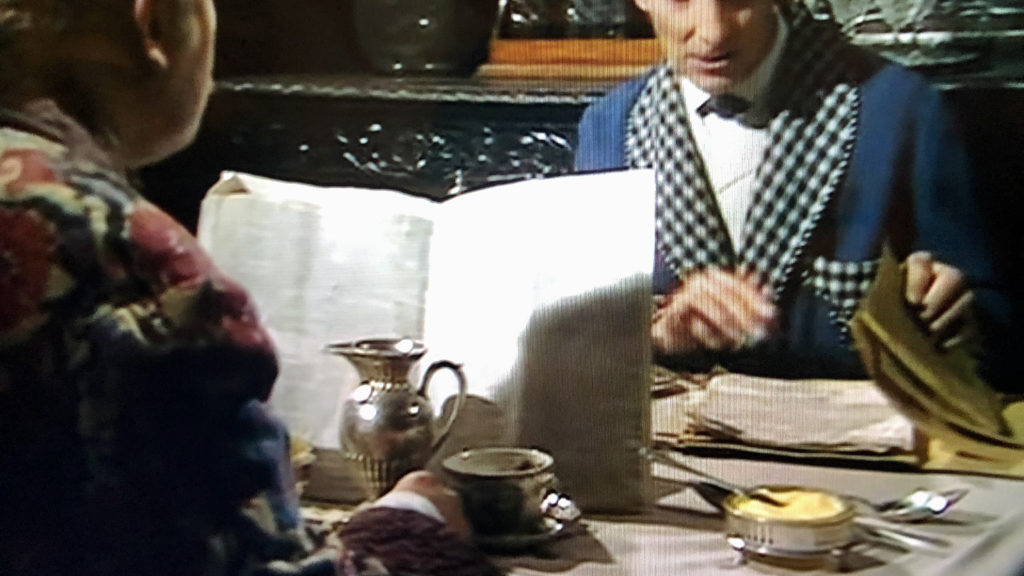

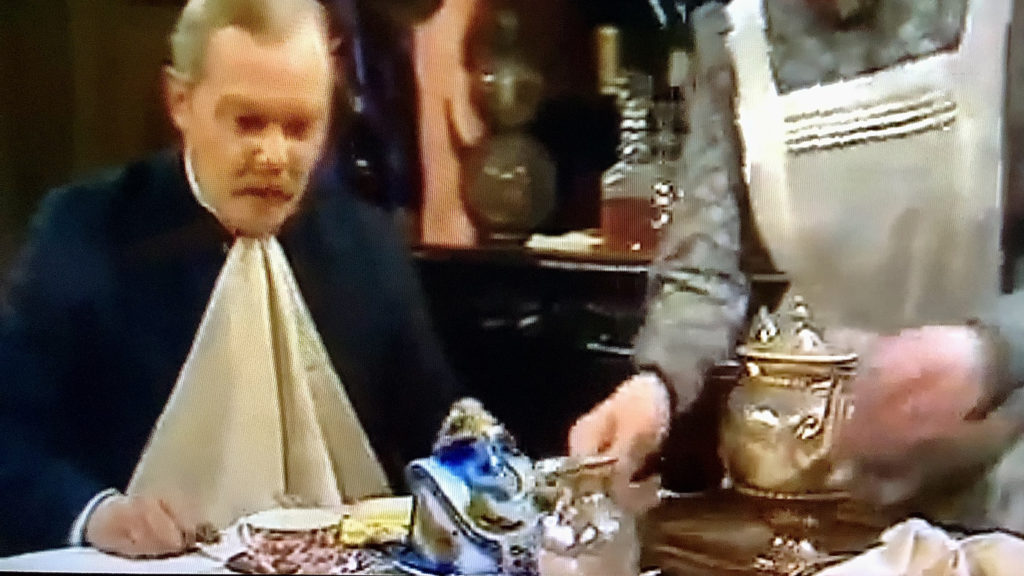
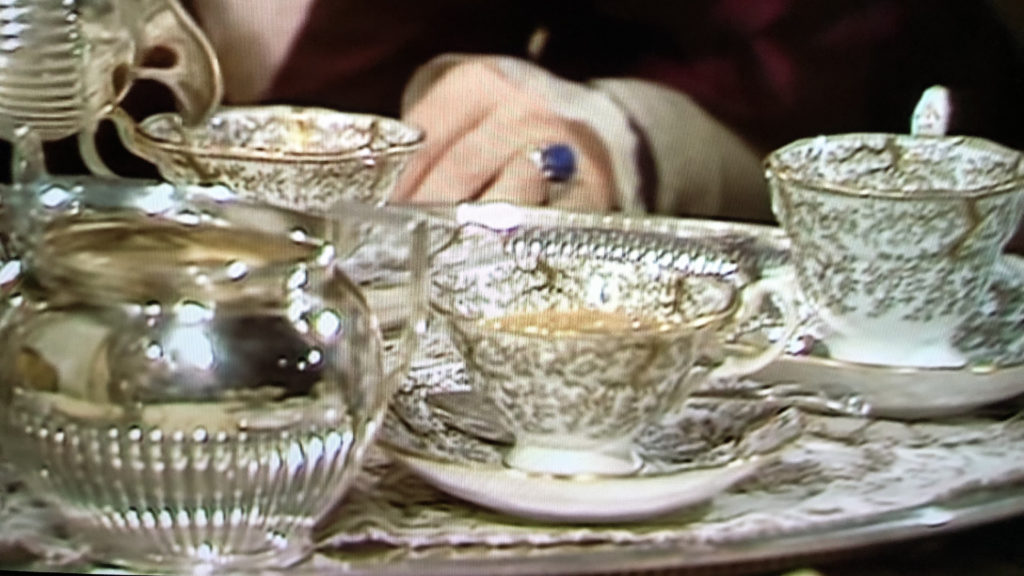
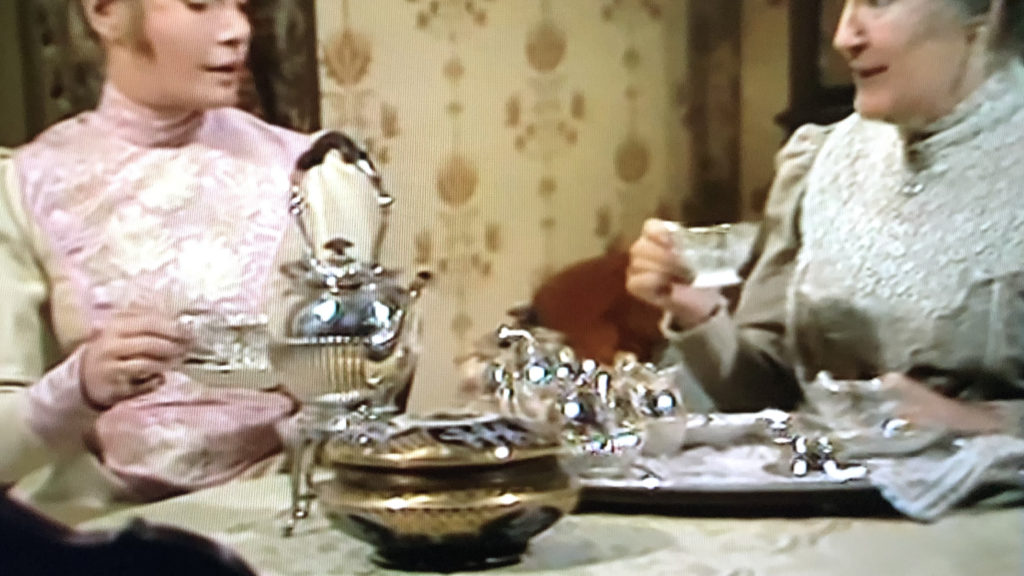
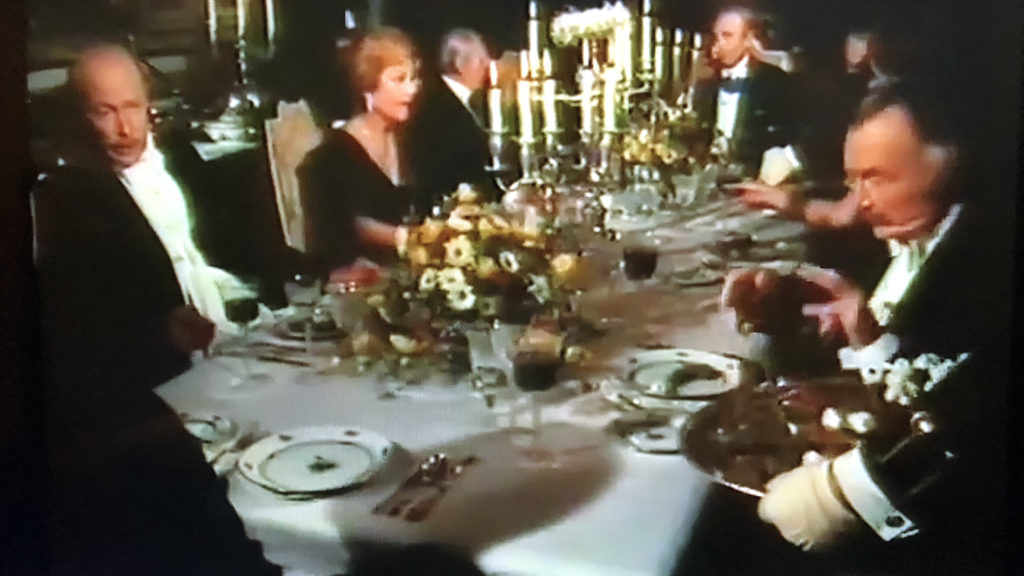
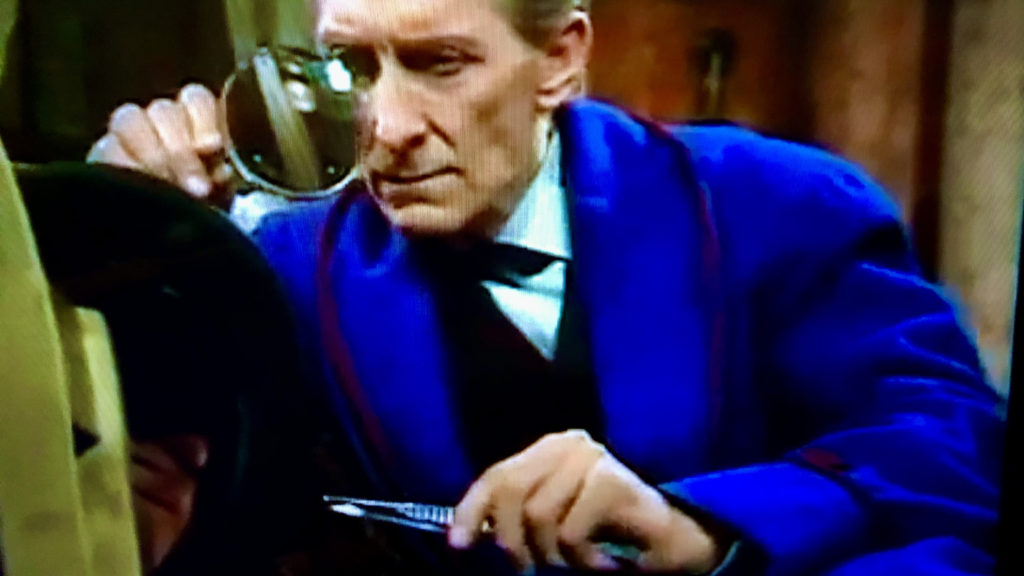
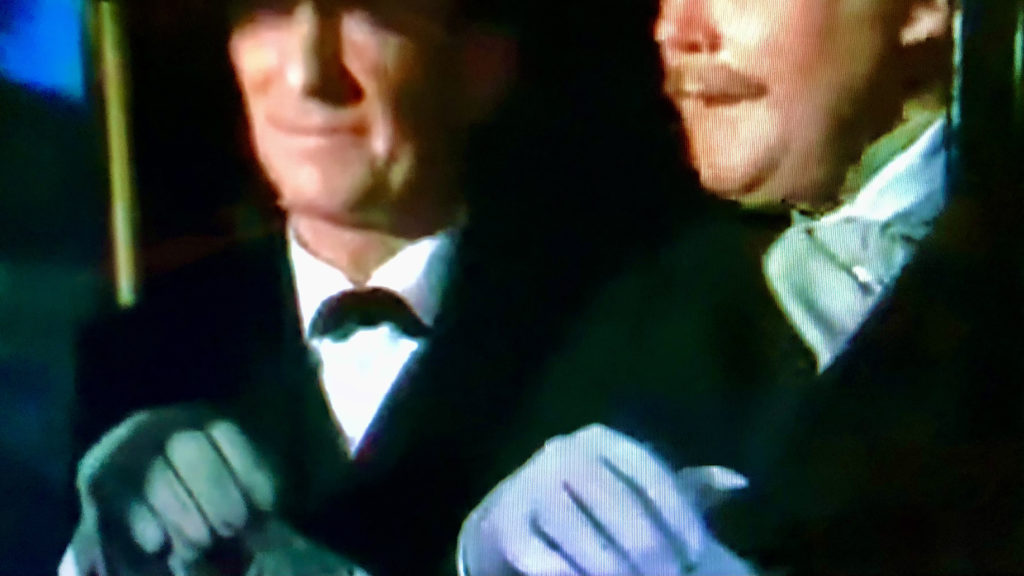
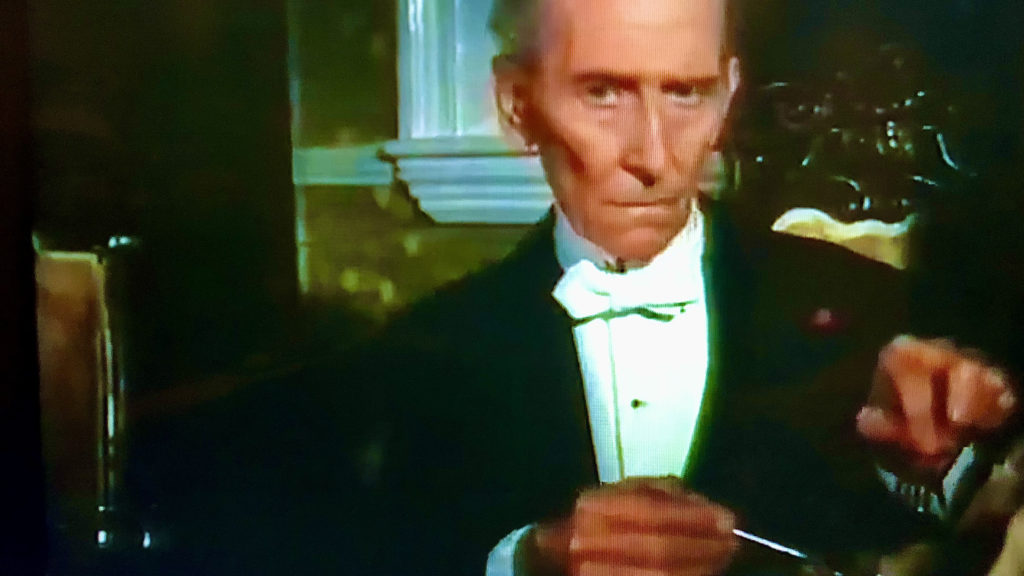
3. Howard’s End (2019)
Let’s be honest, it’s not as wonderful as the Merchant/Ivory film. One would think that having more time to explore the dense material of the book would have made a better product, but the mini-series lacks the sweetness and the humor of the earlier version that offset what is, a very dour story.
That is not to say that it isn’t worth watching. All the performances are good and the art direction and costuming are divine.
Here are some highlights:
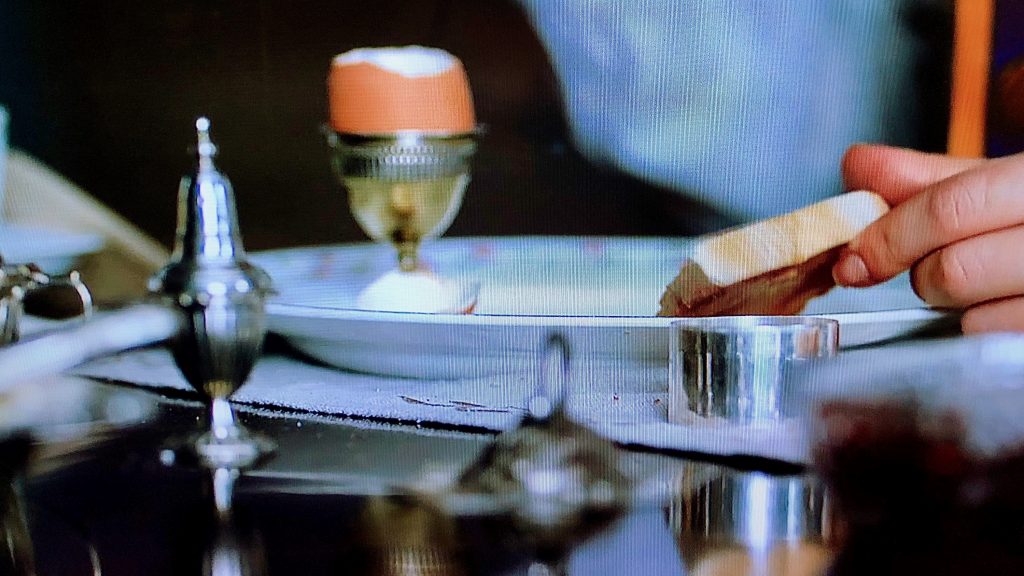
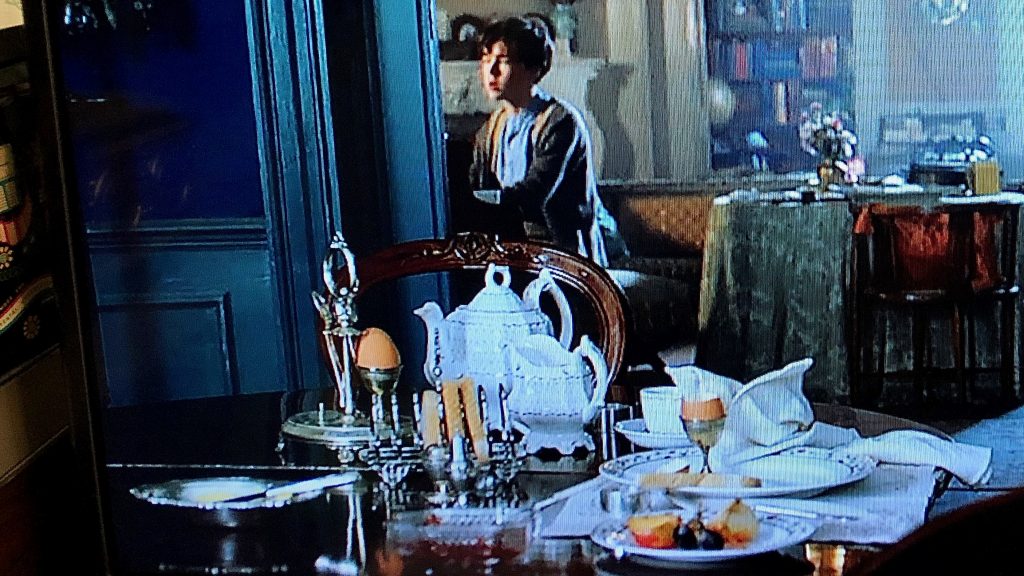

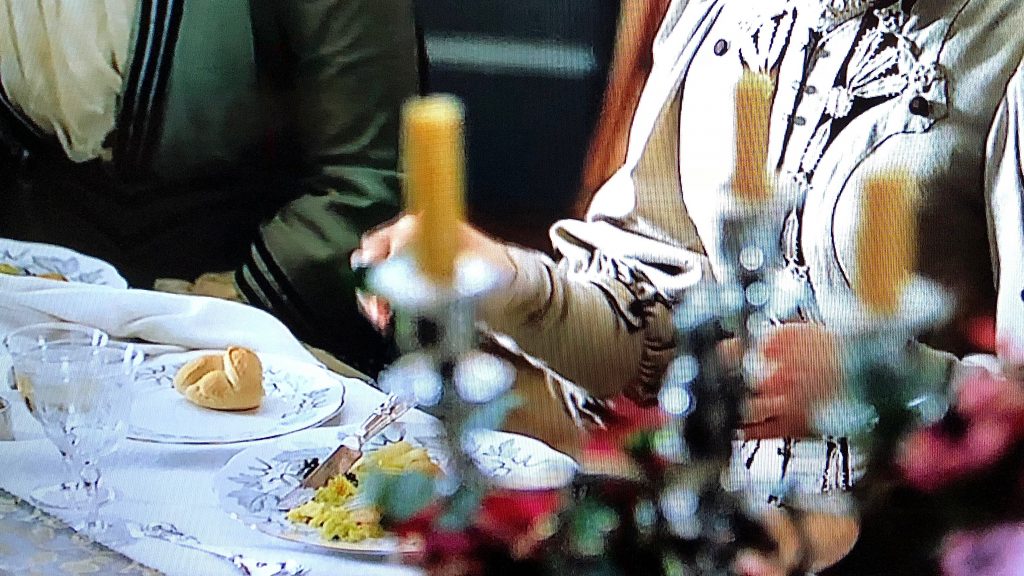
One thing I really wish is that Prussian or Bavarian china would be used for the Schlegel sisters in their home. Possibly a mix of newer British wares for some sets, with Prussian or Bavarian china for their dinnerware and silver. The girls are supposedly half German and one would think, inherited some German silver and china from their family. A point is made that many of the sculptures, artwork and their father’s sword are all from Germany, so it would have been likely to have inherited European 800 silver service or dinner set.
4. The Adventures of Sherlock Holmes (1980’s)
The silver and china in this wonderful 80’s series is absolutely wonderful. It tends to be tucked in the background of scenes, but when you catch a glimpse of it, Oh La La!
I do adore this series as it aired on PBS when I was young and I just loved Jeremy Brett in the role. It’s worth hunting down for the costumes as well – they are really pretty and unlike many other shows from the period, often seem to be actual period pieces.
Note the formal dinner scene – this is where you see the disconnect between correct clothing and etiquette. The table is set for a formal luncheon – tablecloth and bread plates give that away, (I’m often willing to overlook tablecloths as rarely will someone let you shoot with a bare table and damage their priceless antique, but bread plates? No, no, no). The cast is dressed for formal dinner with white tie on the men. These things didn’t happen together and I wish it was more accurate.
Later in Italy they have a family lunch with no tablecloth, but here there should be one. What I do really like in this series is the use of tableware to indicate class. The middle-class dishes are nice, but not the finest, the rich have copious amounts of the finest silver and china while the poor have mismatched crockery. Even the foods served seem to be mostly class accurate. Well done on that I say.
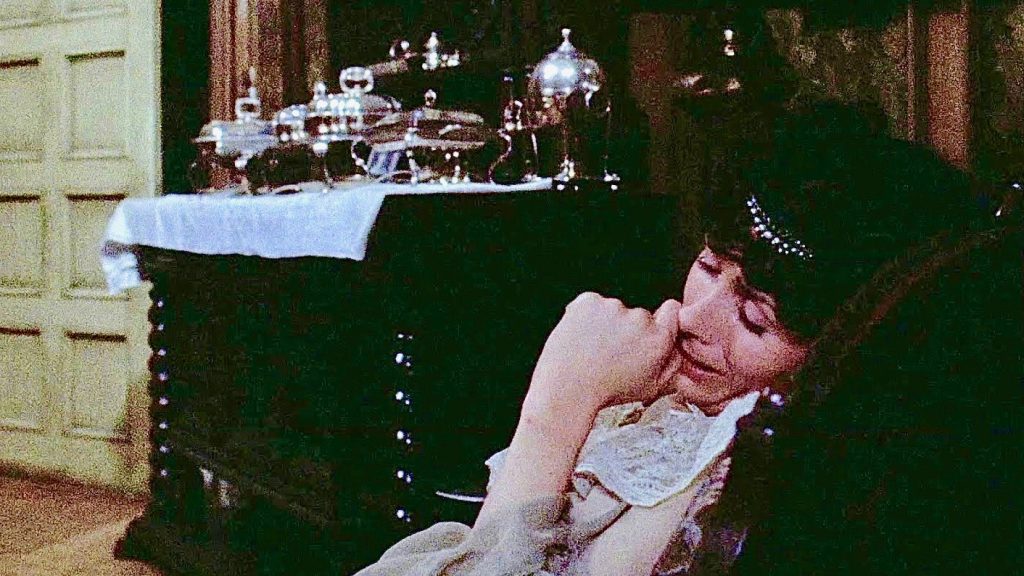



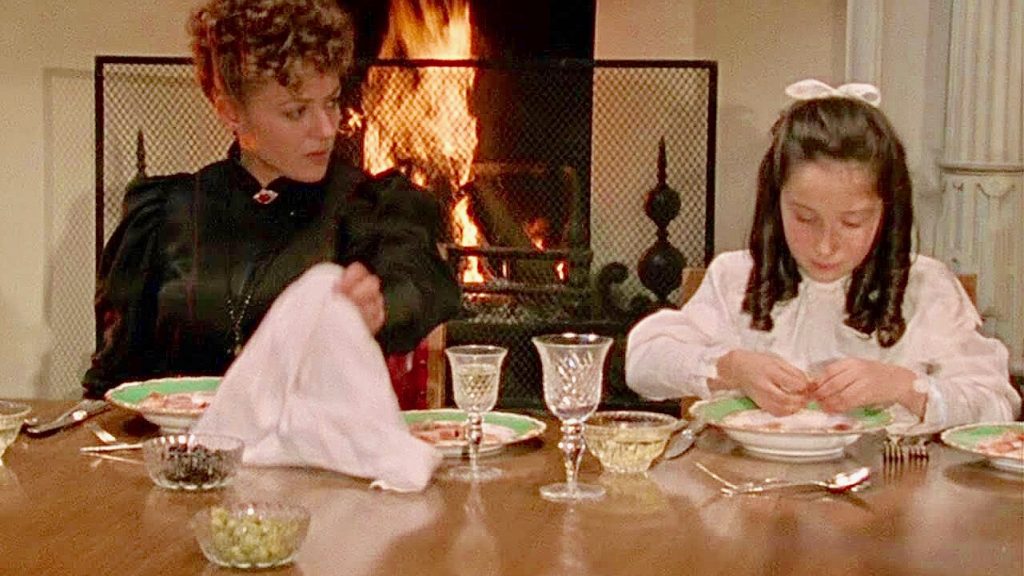
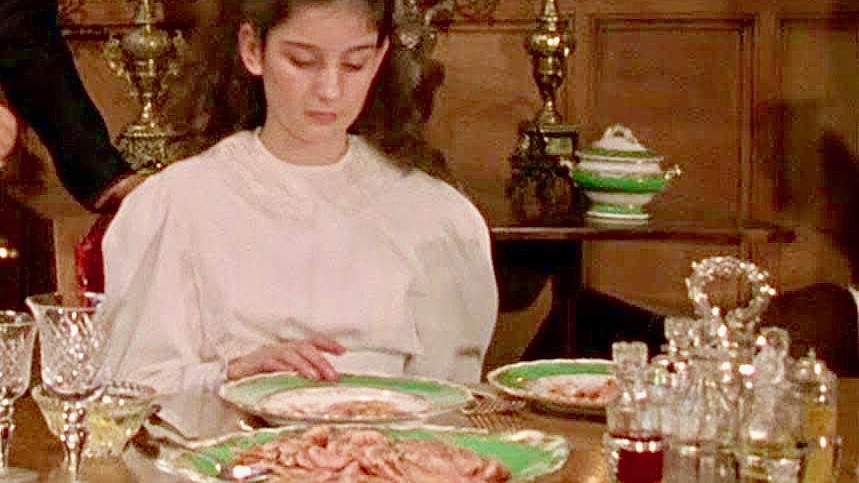
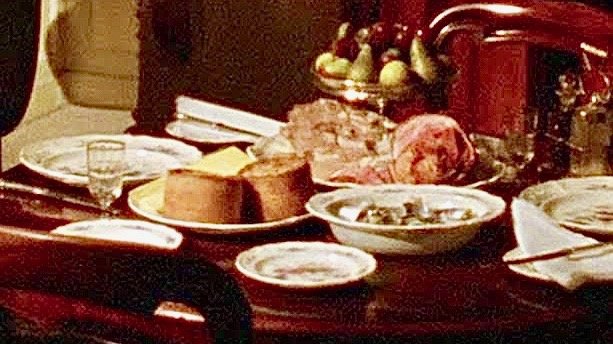
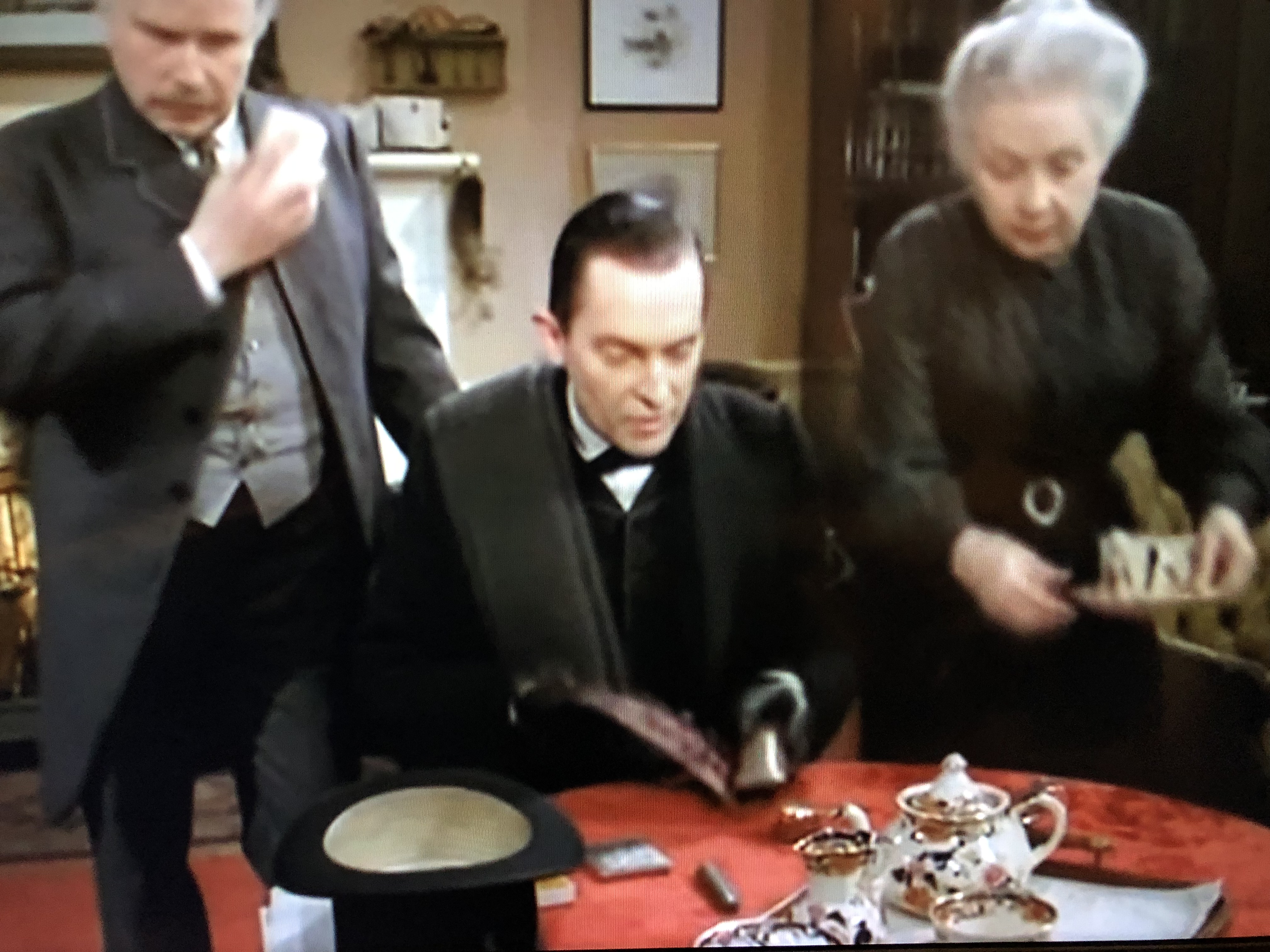
1. Downton Abbey
Here we are at what is arguably the best depiction of tableware and etiquette on screen. Downton Abbey had an etiquette specialist on set. Need I say more? The tables look spectacular. China and silver are repeated in the way they would have been in real life, yet there is still a ton of gorgeous silver and china to look at. Outside of things like tablecloths where there wouldn’t have been, (as I pointed out earlier, this was done to save antique tables) these really feel as close to a window onto a past time as we’re going to see.
Now, I would argue the Post-Edwardian period is easier to put on screen than the Edwardian or more certainly the Victorian, as they sported some rather elaborate table scapes. The Teens had cleaner and more symmetrical tables that were beginning the inextricable march towards the industrial lines of art deco and the more minimal esthetic of thirties and forties home design. But I stan the art direction in this show, none the less. Early on the Dowager Countess still sports an Edwardian look and when she serves tea, her set is still a formal one from turn of the century. The family still has older things with a smattering of newer bits and bobs, but the setting is more up to date as befits a smaller staff of servants and an American hostess.

